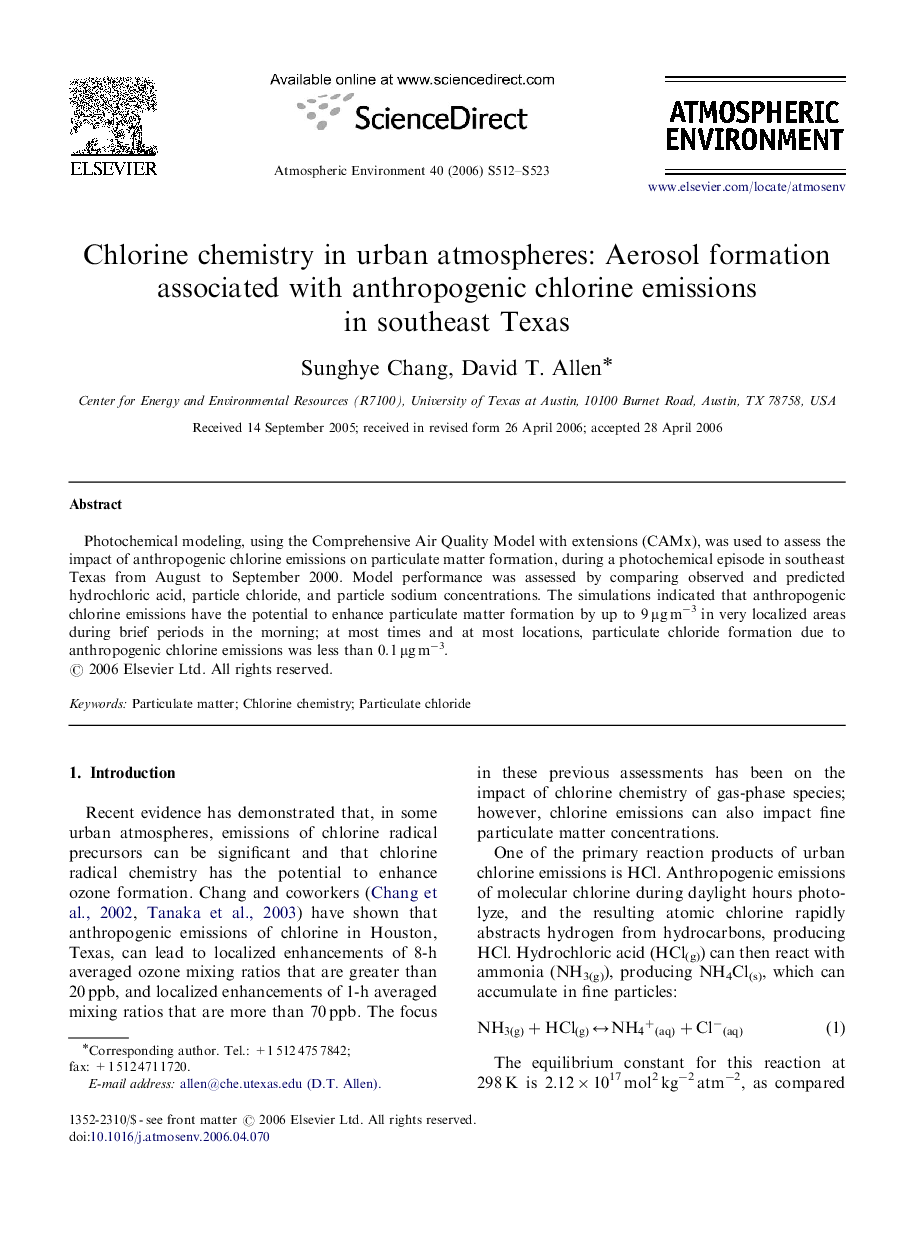| Article ID | Journal | Published Year | Pages | File Type |
|---|---|---|---|---|
| 4445120 | Atmospheric Environment | 2006 | 12 Pages |
Abstract
Photochemical modeling, using the Comprehensive Air Quality Model with extensions (CAMx), was used to assess the impact of anthropogenic chlorine emissions on particulate matter formation, during a photochemical episode in southeast Texas from August to September 2000. Model performance was assessed by comparing observed and predicted hydrochloric acid, particle chloride, and particle sodium concentrations. The simulations indicated that anthropogenic chlorine emissions have the potential to enhance particulate matter formation by up to 9 μg m−3 in very localized areas during brief periods in the morning; at most times and at most locations, particulate chloride formation due to anthropogenic chlorine emissions was less than 0.1 μg m−3.
Keywords
Related Topics
Physical Sciences and Engineering
Earth and Planetary Sciences
Atmospheric Science
Authors
Sunghye Chang, David T. Allen,
